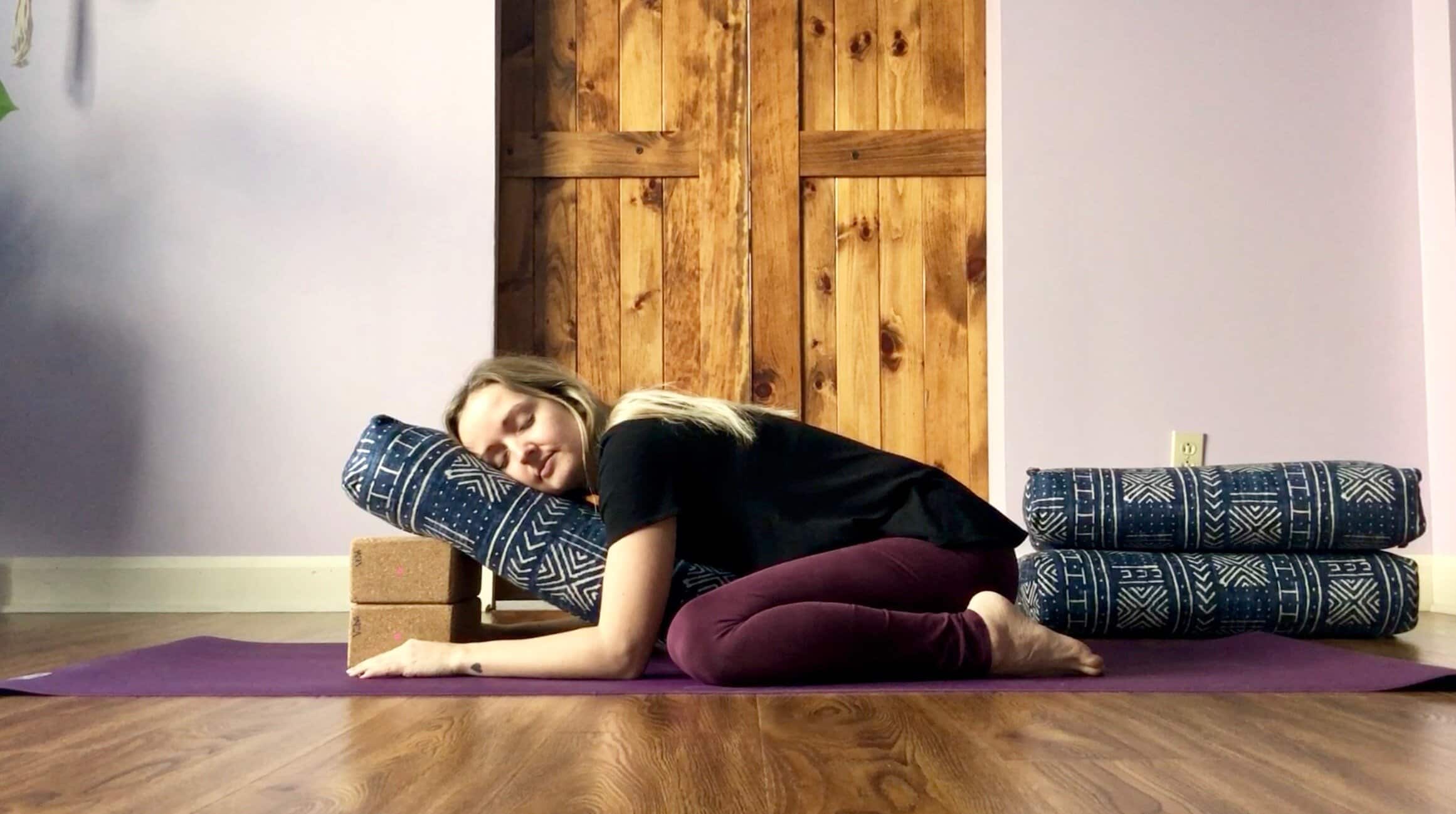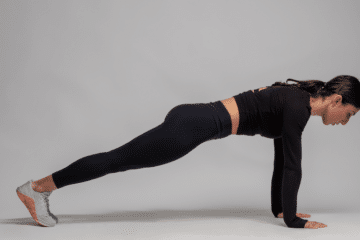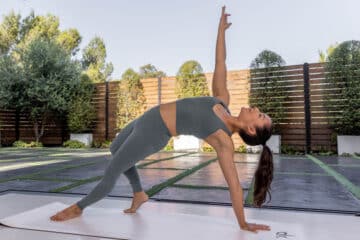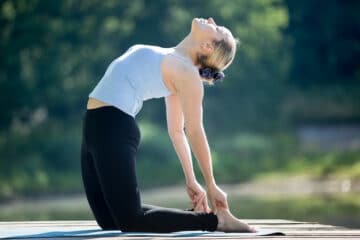In the hustle and bustle of modern life, moments of stillness and introspection are essential for maintaining balance and well-being. Supported Child’s Pose, or Balasana, offers a gentle refuge amidst the chaos—a nurturing posture that invites practitioners to surrender to comfort and relaxation.
By incorporating the support of props such as bolsters, blankets, or pillows, individuals can deepen their experience of this restorative pose, finding solace and renewal in the embrace of quietude.
Understanding Supported Child’s Pose (Balasana):
Supported Child’s Pose is a variation of the traditional Child’s Pose, where practitioners kneel on the floor with their knees wide apart and their toes touching, then fold forward with their arms extended or resting by their sides.
In the supported variation, props are used to provide additional comfort and support, allowing practitioners to sink deeper into relaxation and release tension in the body.
How to Practice Supported Child’s Pose:
- Prepare Your Props: Gather your props—a bolster, two yoga blocks, and a folded blanket. Place the bolster vertically on your mat, aligning it with the length of your torso. Stack the blocks at their lowest height at the top end of your mat.
- Kneel on the Mat: Kneel on the mat with your knees hip-width apart and your big toes touching behind you. Sit back on your heels and take a moment to center yourself.
- Lower Your Torso: Inhale deeply, then exhale as you fold forward, draping your torso over the bolster. Allow your forehead to rest on the bolster and your arms to extend forward or rest by your sides, palms facing up.
- Adjust Your Props: If needed, place additional support under your forehead or chest to find a comfortable position. You can use the blocks to support your forehead or the bolster to support your chest.
- Support Your Hips: If your hips do not comfortably reach your heels, place a folded blanket or cushion between your hips and heels for added support and comfort.
- Breathe and Relax: Close your eyes and take slow, deep breaths, allowing your body to surrender to the support of the props. With each exhale, feel the tension melting away from your shoulders, back, and hips.
- Hold and Release: Remain in the pose for 3-5 minutes, or longer if desired, enjoying the deep relaxation and sense of surrender it brings. When you’re ready to release, gently press into your hands and slowly come up to a seated position.
Benefits of Supported Child’s Pose:
- Relieves Tension in the Spine: Supported Child’s Pose gently stretches the spine and releases tension in the back, shoulders, and neck, making it an excellent posture for relieving stiffness and discomfort.
- Calms the Mind: The forward folding motion of this pose has a soothing effect on the nervous system, helping to quiet the mind, reduce stress, and promote relaxation.
- Opens the Hips and Groin: By allowing the knees to widen and the hips to sink back, Supported Child’s Pose helps open the hips and groin, promoting flexibility and mobility in these areas.
- Encourages Surrender: The supported nature of this pose invites practitioners to surrender to the support of the props and let go of tension, fostering a sense of trust and release.
Precautions and Modifications:
- Knee Sensitivity: If you have sensitivity in your knees, place additional support such as blankets or bolsters under them for added cushioning.
- Pregnancy: Pregnant individuals should practice Supported Child’s Pose with caution, avoiding deep pressure on the abdomen and modifying the pose as needed for comfort and safety.
Conclusion
Supported Child’s Pose offers a sanctuary of stillness and surrender in the midst of life’s demands. By embracing the support of props and allowing the body to soften and release, practitioners can experience a profound sense of relaxation and renewal.
Whether you’re seeking relief from tension, a moment of quiet introspection, or simply a gentle embrace of comfort, Supported Child’s Pose invites you to find solace and serenity in the nurturing embrace of stillness.




